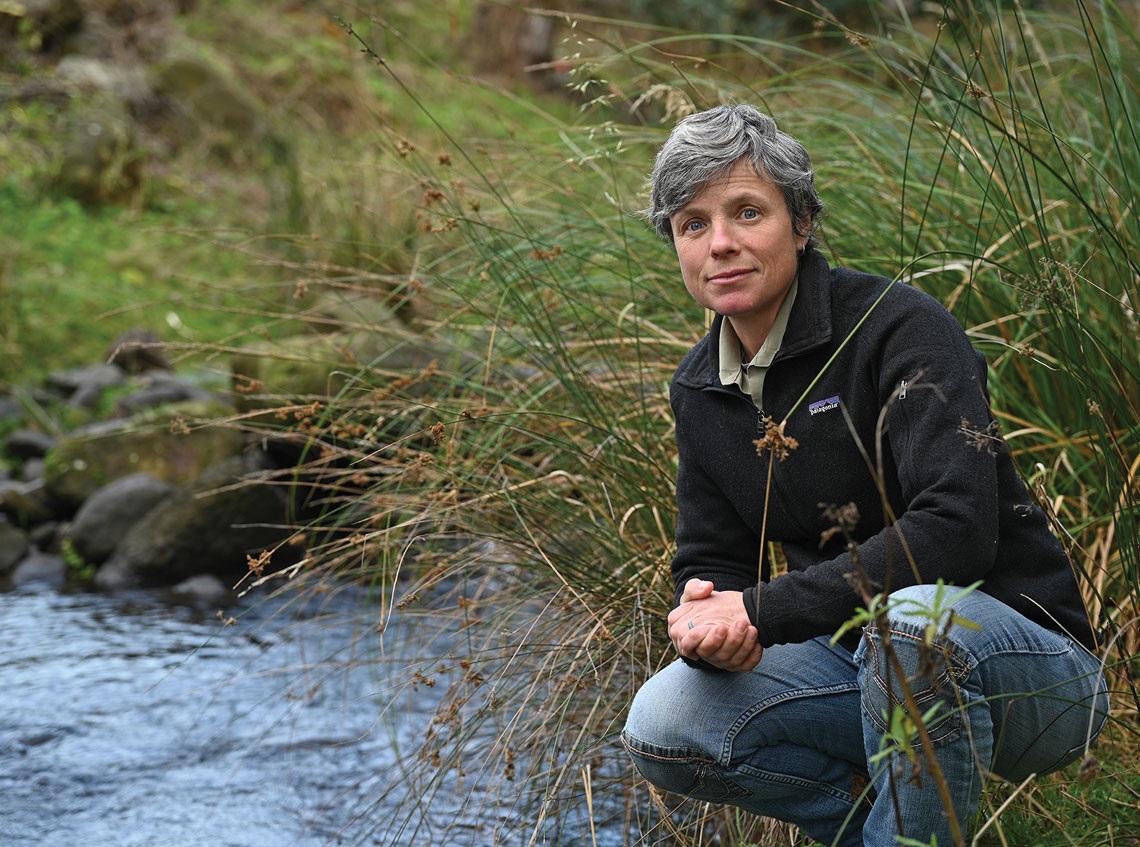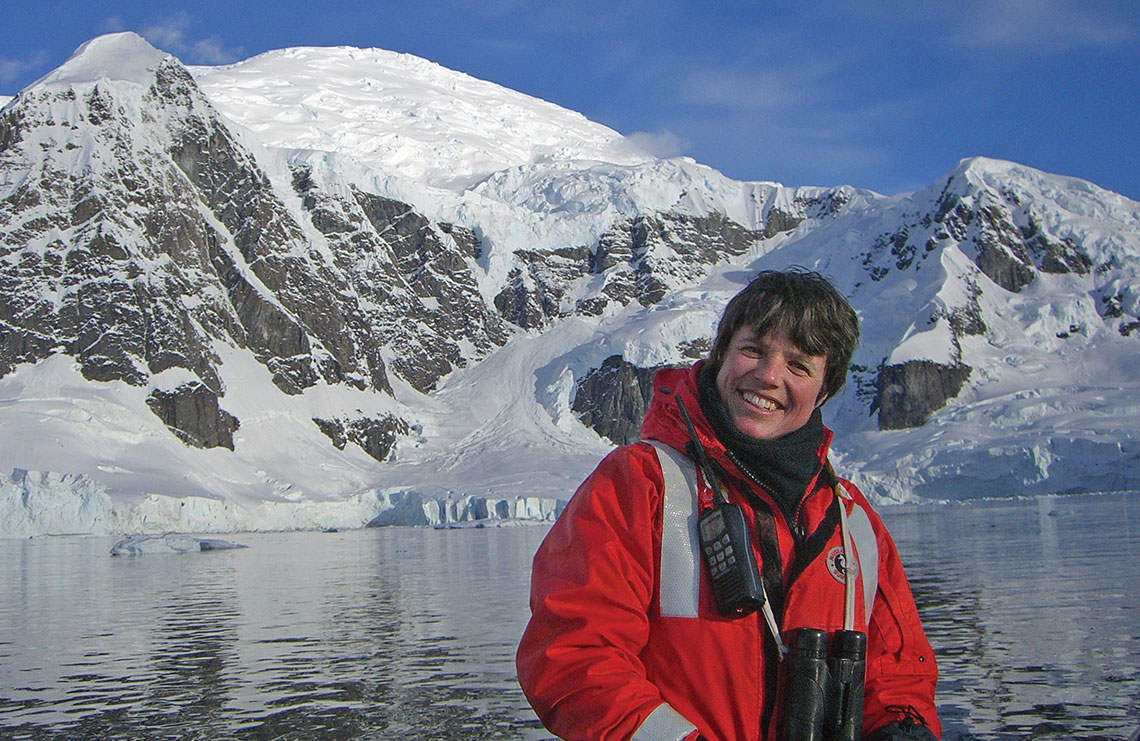
A 10 000 nautical mile sailing trip from Vancouver Island in Canada to Tasmania brought Bushcare volunteer Heidi Krajewsky and her husband to Hobart eleven years ago.
Like so many who come for a visit, the forests and seascapes of the apple isle stole her heart, and Heidi and her husband Stephen Anstee now call Hobart home.
“We didn’t plan on living here permanently, but quickly fell in love with Tasmania,” Heidi says.
One of the biggest drawcards of living in Hobart for Heidi was just how close you can be to a bush track while still living within walking distance of the city.
“In the first year of living here, I was going for a long walk to explore this new city I found myself in,” she says.
“I started in Sandy Bay, because at that time I was still living on the boat. I headed uphill and eventually found myself in Lambert Gully and saw the sign along the track saying a Bushcare group meets once a month to look after this reserve.
“I was intrigued, and so I showed up the next Sunday. I didn’t know where to meet, I just wandered around until I found the group at one of the park entrances.”
The first two people Heidi met at the working bee were convenor Ingrid Colman and Bushcare team leader Bec Johnson.
“They were of course incredibly welcoming and it made me feel like I had met some like-minded people in this new place.”

Heidi has worked on expedition ships in both the Arctic and Antarctica.
Sharing the love
Heidi likes to spread her Bushcare time across a number of groups.
“I volunteer with the Hobart Rivulet group, as it’s the closest to my home, but I also dabble on the hills either side, both in Knocklofty and in South Hobart,” she says.
“Knocklofty has been going the longest I think, of any Hobart Bushcare group, and many of the volunteers have been part of the group for decades.
“They tell stories of the tracks in the reserve being tunnels running under massive thickets of gorse.
“Now of course Knocklofty Reserve is a beautiful bushland park and our working bees mostly focus on follow-up weeding.
“Seeing this bushland reserve in such superb ecological condition must feel incredibly rewarding for the group’s longest-serving volunteers.”
Heidi also loves her work with Hobart Rivulet Bushcare, which is restoring riparian vegetation on the Hobart Rivulet and encouraging healthy habitat for the rivulet’s platypus and other aquatic wildlife.
“Being there at the beginning and knowing that I live in this part of the city and can watch it change with a bunch of dedicated people is really inspiring,” says Heidi.
“Definitely come along and join a group near you. The people are wonderful to work with and it is very satisfying to help look after these special places that we are lucky to have here in Hobart.”
Yellow tailed black cockatoos flying over the Hobart Rivulet.
Feathered friends
Heidi has always been a great lover of the bird world, and plays an important role as a volunteer with BirdLife Tasmania.
“I have been enjoying birds and watching them for as long as I can remember,” she says.
“There’s so much to learn about them, their identification, their behaviour. It adds a lot to my appreciation of any place that I find myself in.”
She says there are a number of ways people can get into bird watching in Hobart and some great resources to get you started.
BirdLife Tasmania has just published a guide to Hobart bird walks, listing our best birding locations and the types of birds you might see in each location.
BirdLife also holds monthly walks guided by volunteers. The best way to find out about them is to follow their Facebook page.
“Waterworks Reserve is one of my favourite places in Hobart to go bird watching,” says Heidi.
“It’s only a bike ride away for me and with the reservoirs and the bush habitat, there is usually a good variety of birds to see.
“I get excited whenever I see or hear yellow-tailed black cockatoos overhead or in my yard. I also love watching the Tasmanian native-hens, or ‘turbo chooks’, along the rivulet, their behaviours and antics can be very interesting!
“But most importantly, get outside with a pair of binoculars and a field guide and just spend time in your local reserve.
“Be patient. It takes time and practice to learn all the local birds, but it is great fun.”
Like this story?
This story first appeared in the City of Hobart's nature magazine the Bandicoot Times. You can read the full edition online.
And if you've been inspired to get more active for nature find out how to get involved with our Bushcare program.